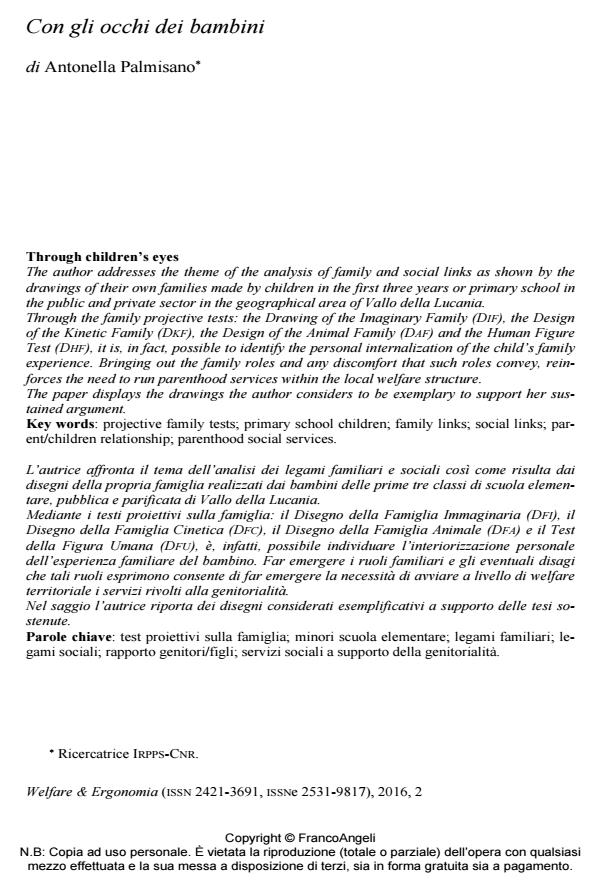Through children’s eyes
Journal title WELFARE E ERGONOMIA
Author/s Antonella Palmisano
Publishing Year 2017 Issue 2016/2
Language Italian Pages 29 P. 52-80 File size 865 KB
DOI 10.3280/WE2016-002004
DOI is like a bar code for intellectual property: to have more infomation
click here
Below, you can see the article first page
If you want to buy this article in PDF format, you can do it, following the instructions to buy download credits

FrancoAngeli is member of Publishers International Linking Association, Inc (PILA), a not-for-profit association which run the CrossRef service enabling links to and from online scholarly content.
The author addresses the theme of the analysis of family and social links as shown by the drawings of their own families made by children in the first three years or primary school in the public and private sector in the geographical area of Vallo della Lucania. Through the family projective tests: the Drawing of the Imaginary Family (DIF), the Design of the Kinetic Family (DKF), the Design of the Animal Family (DAF) and the Human Figure Test (DHF), it is, in fact, possible to identify the personal internalization of the child’s family experience. Bringing out the family roles and any discomfort that such roles convey, rein-forces the need to run parenthood services within the local welfare structure. The paper displays the drawings the author considers to be exemplary to support her sus-tained argument.
Keywords: Projective family tests; primary school children; family links; social links; par-ent/children relationship; parenthood social services.
Antonella Palmisano, Con gli occhi dei bambini in "WELFARE E ERGONOMIA" 2/2016, pp 52-80, DOI: 10.3280/WE2016-002004